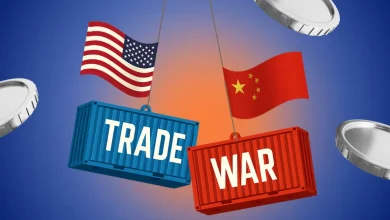
U.S. aims to cement dollar dominance globally by backing stablecoins with Treasury debt instruments.
U.S Treasury Scott Bessent sees stablecoins growing into a $2 trillion market in coming years.
Meanwhile, Retailers view stablecoins as faster, cheaper payment alternatives to Visa and Mastercard networks.
The U.S. government is no longer just exploring crypto — it’s embracing it as a strategy. Treasury Secretary Scott Bessent says dollar-pegged stablecoins could grow into a $2 trillion market. He believes these coins can make the U.S. dollar stronger and more widely used worldwide.
With new legislation on the way, stablecoins may soon become a core part of U.S. finance.
Stablecoins Pegged to USD to Hit $2 T
During a Senate Appropriations Committee hearing, Bessent didn’t present stablecoins as a threat to the current financial system. Instead, he called them the next evolution of the U.S. dollar’s journey.
With strong rules in place, requiring full backing by Treasury bills and other short-term U.S. debt, stablecoins could go mainstream without risking financial stability.
He estimated that the market value of stablecoins could reach $2 trillion in the coming years. Supporting this outlook, a fresh report by the Citi Institute hints at an even more optimistic picture, projecting stablecoin issuance to soar to $3.7 trillion by 2030.
What’s the goal?
Spread dollar-based digital assets around the world, increase demand for U.S. debt, and make the dollar even more central to global trade and finance.
Congress is catching up fast. The Senate just cleared a key vote on a stablecoin bill, and it’s likely to become law soon.
Meanwhile, President Trump supports it, crypto lobbyists are fully behind it, and even major retailers see benefits. For them, stablecoins offer a cheaper, faster alternative to credit card giants like Visa and Mastercard.
Not Everyone’s on Board
Banks are split. Small banks worry that stablecoins could drain deposits and hurt local lending. Meanwhile, big banks are taking a different route, creating their own stablecoins to retain customers and earn interest from their reserves.
Retailers, on the other hand, want more than just stablecoin support. They’re pushing for changes that would break the dominance of Visa and Mastercard.
But the Senate is likely to block those efforts, and a separate move to stop Trump from profiting off crypto while in office.
If this bill passes, the U.S. dollar could quietly go digital in the form of regulated, debt-backed stablecoins. And that may be just what policymakers want.
Never Miss a Beat in the Crypto World!
Stay ahead with breaking news, expert analysis, and real-time updates on the latest trends in Bitcoin, altcoins, DeFi, NFTs, and more.
FAQs
US stablecoins offer faster, cheaper cross-border payments, 24/7 accessibility, and reduced currency fluctuation risks. They enhance global demand for the US dollar and strengthen its central role in international finance.
New legislation will likely create clear rules for bank-issued stablecoins. While big banks are creating their own stablecoins to retain customers, small banks worry about deposit drainage, potentially increasing the divide in the banking sector.
Challenges include regulatory uncertainty in various jurisdictions, concerns about reserve transparency and liquidity, potential for “runs” if not fully backed, and the split opinion among traditional financial institutions.
Trust with CoinPedia:
CoinPedia has been delivering accurate and timely cryptocurrency and blockchain updates since 2017. All content is created by our expert panel of analysts and journalists, following strict Editorial Guidelines based on E-E-A-T (Experience, Expertise, Authoritativeness, Trustworthiness). Every article is fact-checked against reputable sources to ensure accuracy, transparency, and reliability. Our review policy guarantees unbiased evaluations when recommending exchanges, platforms, or tools. We strive to provide timely updates about everything crypto & blockchain, right from startups to industry majors.
Investment Disclaimer:
All opinions and insights shared represent the author's own views on current market conditions. Please do your own research before making investment decisions. Neither the writer nor the publication assumes responsibility for your financial choices.
Sponsored and Advertisements:
Sponsored content and affiliate links may appear on our site. Advertisements are marked clearly, and our editorial content remains entirely independent from our ad partners.








